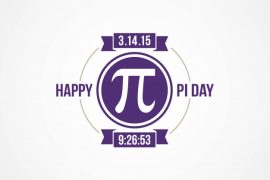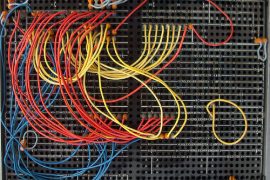So the Sumerian system of numbers — as far as we know, the first in the world — came into being rather naturally and out of necessity. But the Egyptians took things one step further, and they did it very systematically. Priests and scribes invented a system of numbers that included tally marks and hieroglyphics. In doing so, they developed a base-ten system featuring different symbols for different numbers.
The Egyptian people were very fortunate. With few neighbors, they didn’t have spend time worrying about war or defending themselves from attack. They also lived in a very fertile area, making agriculture less troublesome than it might have been. All of this freed up their time to do things like develop a numerical system and make big advances in mathematics. (You know, the ordinary stuff we do when we live in peace and have lots of food and water.)
Hieroglyphics could be used to express a wide variety of numerical values — all the way to one million! The symbol for one was a tally mark, so four tally marks represented 4, and so on. But 10 was expressed as a horseshoe shape and 100 a coiled rope. A little tiny prisoner begging for forgiveness was the hieroglyphic for 1,000,000. (I’d love to know the story behind that one.)

While these characters could be arranged to represent an almost endless set of whole numbers and even fractions, the Egyptians were missing a critical numeral: zero. This meant that with all of their advances, Egyptian numbers had no place value system.
All of this allowed the Egyptians to take huge steps in the development of arithmetic, including the four basic operations — addition, subtraction, multiplication and division — and using numbers for measurement. Without these advances, we would have no great pyramids.
As the ancient society moved to the much more portable and easier-to-use papyrus and ink to record words and numerals, hieroglyphs gave way to hieratic numerals. These are more akin to brush strokes, and allowed the Egyptians to write larger numbers with fewer symbols. It’s pretty easy to see that this sped things up quite a bit.
On Friday, we’ll visit ancient India, where the most amazing creation/discovery revolutionized the system of numbers. (Seriously, this was a big, big deal!)
Can you imagine having to use hieroglyphics to balance your checkbook? If you have questions about the Egyptian system of numbers, ask them in the comments section.







Comments are closed.